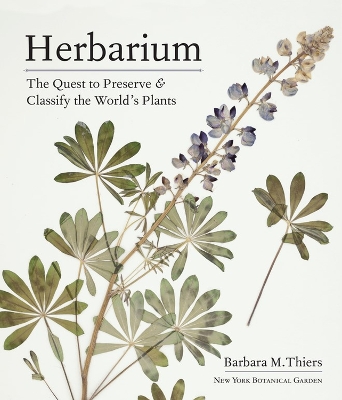Reviewed by annieb123 on
Herbarium is a comprehensive reference of the history and development of botanical nomenclature as related by botanist Barbara M. Thiers. Due out 24th Nov 2020 from Workman Publishing on their Timber Press imprint, it's 304 pages and will be available in hardcover and ebook formats.
The cataloguing and organization of plant material into a cohesive (and correctly identified) herbarium is admittedly exotic, academic, and (some would say) tweedy pastime. It's also deeply steeped in adventure, history, (yes colonialism), and exploration. Early explorers were hardy and fearless and raced to find and bring back heretofore unknown species. As a result, botanical material was crated and shipped wholesale (generally unidentified) back to be bought and curated into private and public collections worldwide.
This is the story of those collectors, the materials they brought back, the people who curate(d) and maintain(ed) them then and now, conservation, and more. The book is arranged roughly chronologically and geographically: origins, the age of botanical exploration, herbaria in the US, herbaria in the wider world, and the important future of herbaria given the uncertainties of climate change. The author has an engaging writing style, both academically rigorous and layman accessible. I can well imagine that she's a capable lecturer.
The book is -beautifully- illustrated throughout with mounted specimens shown in situ with their accession entries. It's very much like a museum trip in the reader's hands as well as abundant drawings and illustrations. I work in a healthcare setting in a laboratory (cancer biopsies mostly), but seeing the photographs of their labs with climate controlled storage and rooms full of files of plant material made my bionerd-y heart sing.
There is an abbreviated resource and bibliography list for further reading, a links and informational list of worldwide botanical collections, as well as a comprehensive cross-referenced index.
It's an admittedly niche book, but I heartily recommend it to readers who enjoy academic collections and who really enjoy seeing huge collections of *stuff* being arranged and catalogued and ordered. Beautifully done and well illustrated. Five stars.
Disclosure: I received an ARC at no cost from the author/publisher for review purposes.
Reading updates
- Started reading
- 18 September, 2020: Finished reading
- 18 September, 2020: Reviewed
